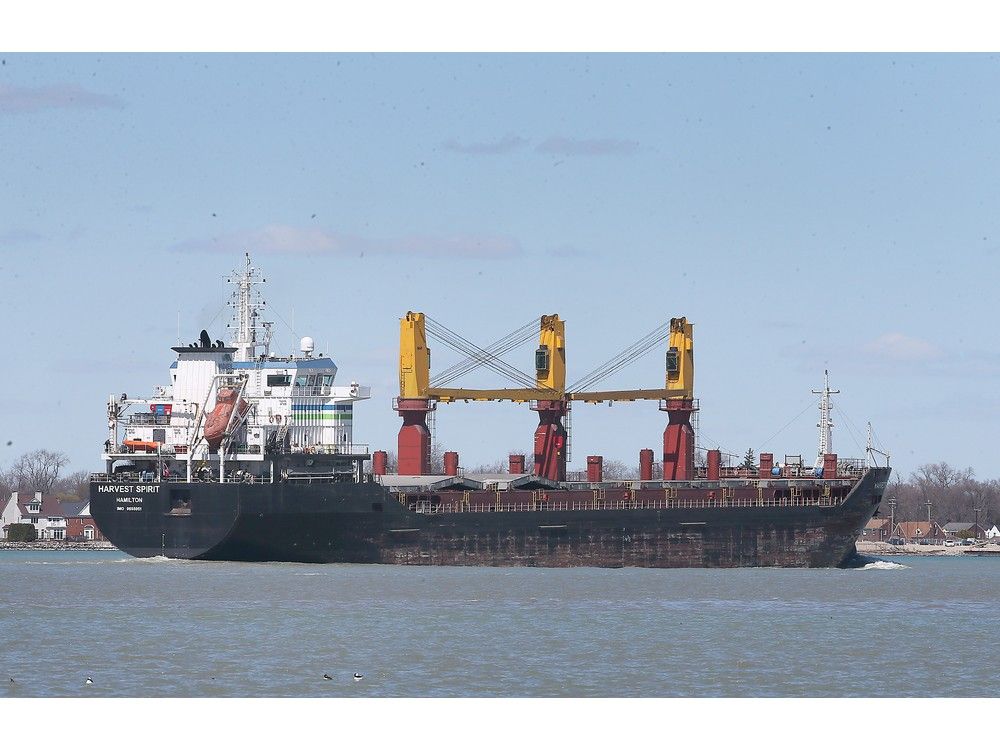U.S. President Donald Trump’s desire to revive the American shipbuilding industry threatens to create another vehicle to drive up costs for shipping companies, port authorities and consumers through a cocktail of tariffs, fees and taxes to finance the project, Windsor Port Authority CEO Steve Salmons warns.
“Ultimately, we have to cover those costs,” he told the Star. “Like anything, if the costs in shipping go up, that’s going to be passed along to the consumer.” Three new charges alone contained in a new Trump administration proposal aimed at rejuvenating U.

S. shipbuilding will add a minimum of over 20 per cent to any non-American cargo entering the U.S.
The proposal is expected to come under final review in the coming months, with a Maritime Action Plan to be in place within 210 days. “It will definitely affect our cost structure,” said Salmons, who noted Canadian port authorities receive no government support unlike their American counterparts. “It squeezes margins.
In a final draft of Trump’s executive order on ‘Maritime Dominance’ released April 9, the U.S. is proposing to apply its Harbor Maintenance Fee (.
125 per cent of cargo value) and related fees to any vessel that lands at any port that transships goods into the U.S. In addition, that U.
S.-bound cargo will be subject to Trump’s new universal tariffs based on country of origin. A further 10 per cent handling charge will be added at the border by U.
S. Customs and Border Patrol to cover any costs incurred in implementing the new plan. Tariffs would also be imposed on vessels using Chinese-built ship-to-shore cranes and other cargo-handling equipment.
The order directs U.S. officials to engage allies within 90 days on aligning counter tariffs and trade policies with China.
It furthers holds out the carrot for those nations that such alignment could be a mechanism for addressing land border tariffs. Trump has also directed U.S.
officials within 90 days to identify ‘the vision, goals challenges and objectives necessary to secure the arctic waterways and enable American prosperity in the face of evolving arctic security challenges and associated risks.’ However, Salmons said the biggest win was what wasn’t included in the re-drafted order after industry officials pleaded their case at the U.S.
Trade Representative public hearings in March. Gone for now is a proposal to charge Chinese-built or flagged vessels millions every time they stop in a U.S.
port. The proposal would’ve seen possible fees over US$1.5 million per port call.
Much of the Great Lakes shipping fleet in both Canada and the U.S. has been built in China in recent years, exposing them to those massive taxes.
“We were successful because both the Canadian and American industries were able to articulate how serious the impact of those fees would have been for Great Lakes shipping,” Salmons said. “You can’t spread such huge fees over as many containers on 25,000-ton ship on the Great Lakes as you can on an ocean-going vessel. “Still, even on a larger, 10,000-container ocean vessel, those fees would’ve added US$600-$800 per container.
” With Great Lakes ships often making multiple stops on a run, the massive bills would’ve devastated the maritime industry on both sides of the border. Salmons said the Great Lakes shipping industry is the bulk version of what trucking does in the same region. “We’re moving around the Great Lakes basin by ship the large, bulky items like iron ore, coal, steel, salt and grain,” Salmons said.
“If you make it too costly to ship, you have to transport those items by truck and train. That not only increases costs, but you lose the greenest transportation option: “Trucks have nine times per ton more emissions and trains are three times more.” Salmons said Trump’s executive order has two main goals — rebuilding the American shipbuilding industry and penalizing China for perceived unfair trade practices.
The Americans allege those unfair tactics have helped it become the dominant player in global shipbuilding. South Korea, Japan and Malaysia are also prominent players in shipbuilding, though they significantly trail China in production. “Trump’s goal of reviving American shipbuilding is laudable and justified,” Salmons said.
“The tactics he’s proposing to use would damage today’s market. “Tariffs and taxes are a terrible idea. It will disrupt supply chains and increase costs and doesn’t address U.
S. shipbuilding at all for a decade.” RelatedPort Windsor sees 'largest-ever' federal investment with $26M for grain terminalFederal government announces more funding for Port of Windsor warehouseWhat to do with steel, grain shipments? Impact of Trump tariffs piling up in Windsor Salmons said American shipyards only built five vessels last year, all of them for the U.
S. Navy. The U.
S. essentially has no commercial shipbuilding industry, he said. “There are 3,000 to 4,000 new ships built each year,” Salmons said.
“The first slot available to build a commercial ship in the U.S. isn’t for seven years.
“They don’t have a commercial industry and what they build is three to five times more expensive because they’re doing it for the military. “China, South Korea, Malaysia are highly skilled and efficient ship builders, and they build the world’s shipping.” Dwaddell@postmedia.
com Twitter.com/windstarwaddell.
















